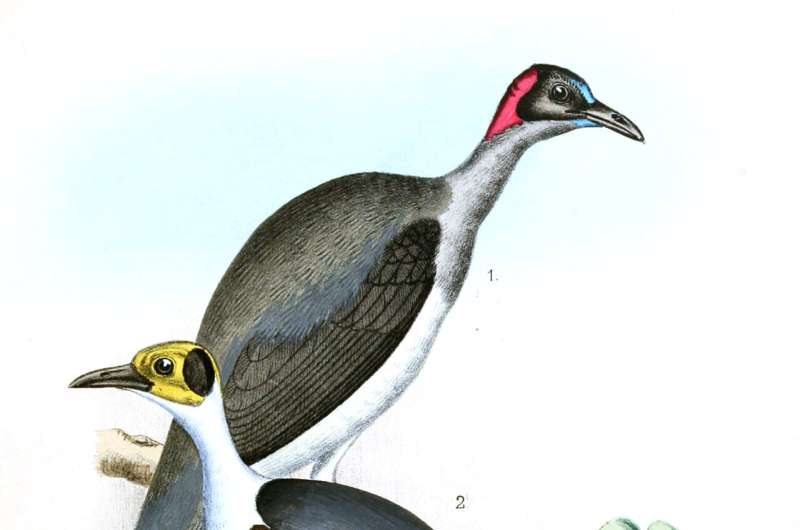This article has been reviewed according to Science X's editorial process and policies. Editors have highlighted the following attributes while ensuring the content's credibility:
fact-checked
proofread
Threatened gray-necked rockfowl's habitat even smaller than expected, study finds

A new study on gray-necked rockfowl has found a much smaller range of suitable habitat for this elusive African bird than was previously assumed, and may warrant a downgrade in its conservation status.
Scientists from the Cameroon Biodiversity Association (CAMBIO) in Cameroon, in partnership with San Diego Zoo Wildlife Alliance, set out to better understand how much suitable habitat remains for the rockfowl, and where the birds can still be found.
Understanding suitable habitat and its extent is crucial for protecting species. However, scientists have limited knowledge about the available habitat for many species, including the gray-necked rockfowl (Picathartes oreas). One of only two species in the little-known family Picathartidae, gray-necked rockfowl are found only in the forests of Central Africa. Changes in land use are resulting in disappearing forests and habitat fragmentation in this region.
The study, published in Bird Conservation International, utilized intensive field work and advanced modeling techniques to generate crucial insights, including evidence to suggest changing the species' status on the International Union for Conservation of Nature (IUCN) Red List of Threatened Species, from Near Threatened to Vulnerable.
Scientists assessed 339 new and historical gray-necked rockfowl occurrence records, along with environmental variables. Then they predicted suitable habitat available for gray-necked rockfowl, and where conservation efforts for the species should be focused. The results show that the birds are strongly connected to areas with steep slopes and abundant forest cover, while variables related to climate, vegetation health and habitat condition didn't play a role in the birds' distribution.
This study did not consider, however, how predictor variables might change in the future, due to factors such as climate change.
"Forest cover loss across Central Africa, home to many endemic, endangered and often understudied species, is accentuating biodiversity loss driven by climate change and other pressures," said Ekwoge Abwe, Ph.D., a Scientific Program Manager for San Diego Zoo Wildlife Alliance, manager of CAMBIO and a co-author of the study.
"Given its specific habitat requirements, including forest cover and steep slopes, the persistence of gray-necked Picathartes could be a good indicator of healthy forest. Conserving these unique habitats will help not only these birds, but a wide range of other related species."
Ultimately, the team identified around 6,690 square miles, or 17,327 square kilometers, that fit the species' desired criteria.
"Unfortunately, only about 2,490 square kilometers (961 square miles, or 14.4%) of this suitable habitat is in protected areas with strictly enforced conservation efforts," said Guilain Tsetagho, research assistant at CAMBIO, who led the study.
"Considering the bird's limited range, specific nesting habitat needs and the increasing pressures from human activities, changing its conservation status could help prevent further land use from damaging rockfowl-compatible areas."
More information: Guilain Tsetagho et al, Modeling the potential distribution of the threatened Grey-necked Picathartes Picathartes oreas across its entire range, Bird Conservation International (2023). DOI: 10.1017/S0959270923000175
Provided by San Diego Zoo Wildlife Alliance





















